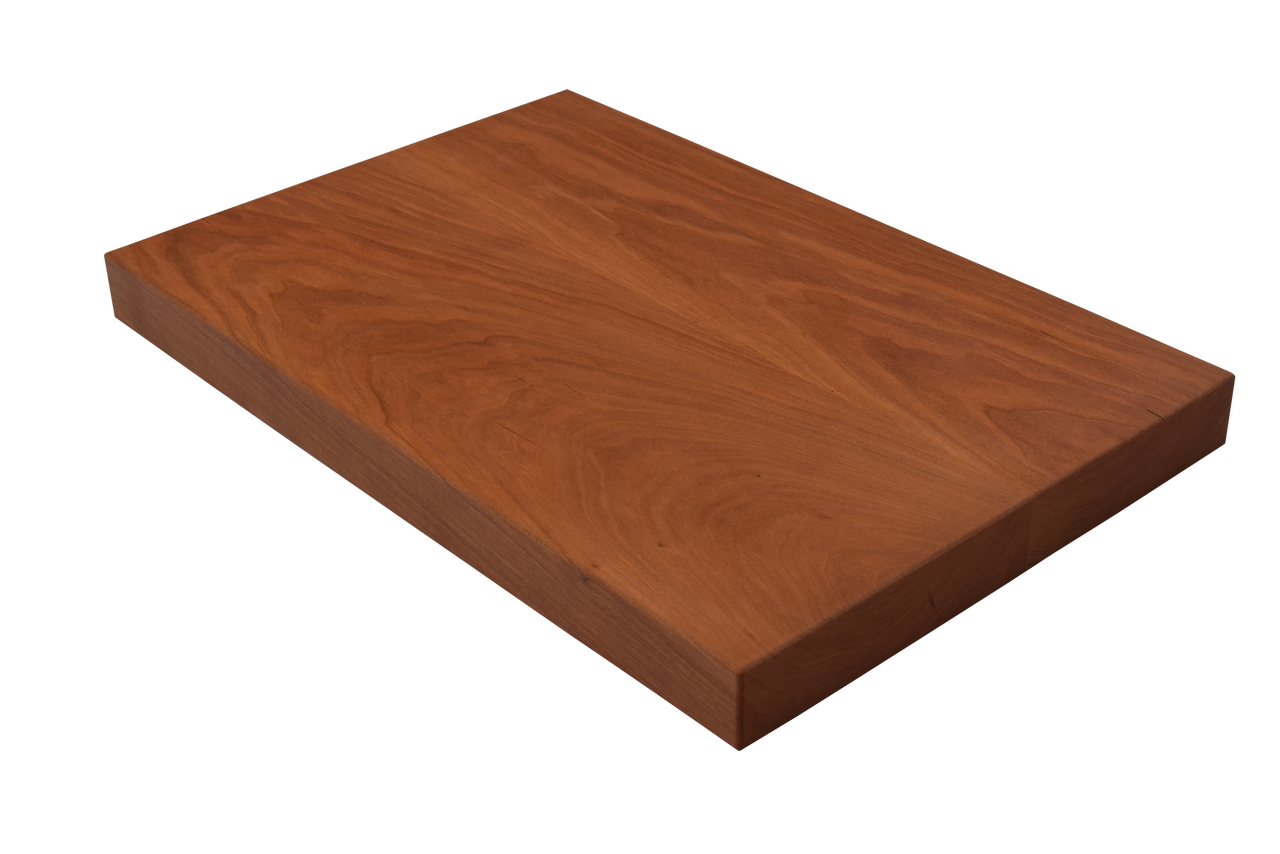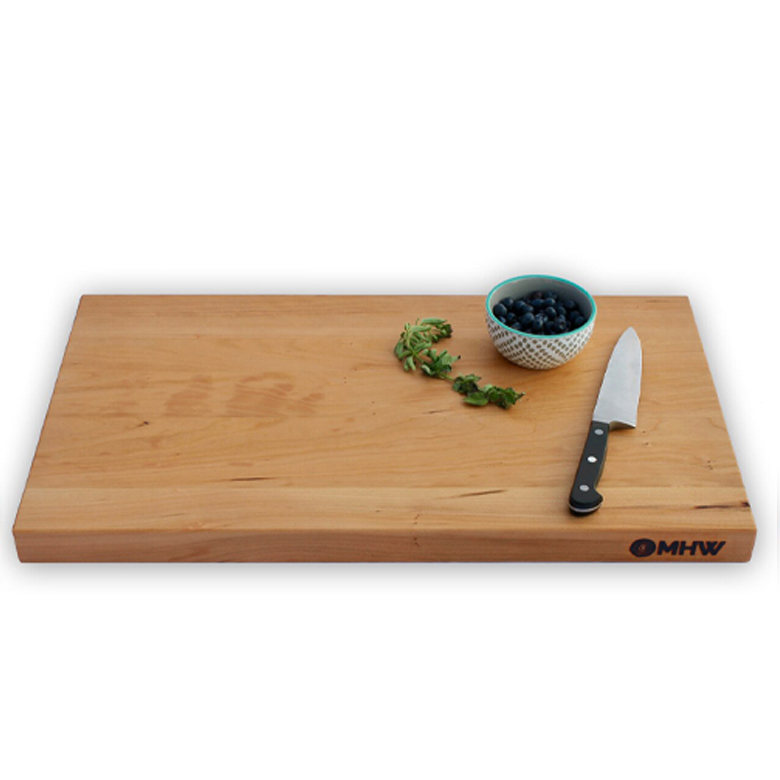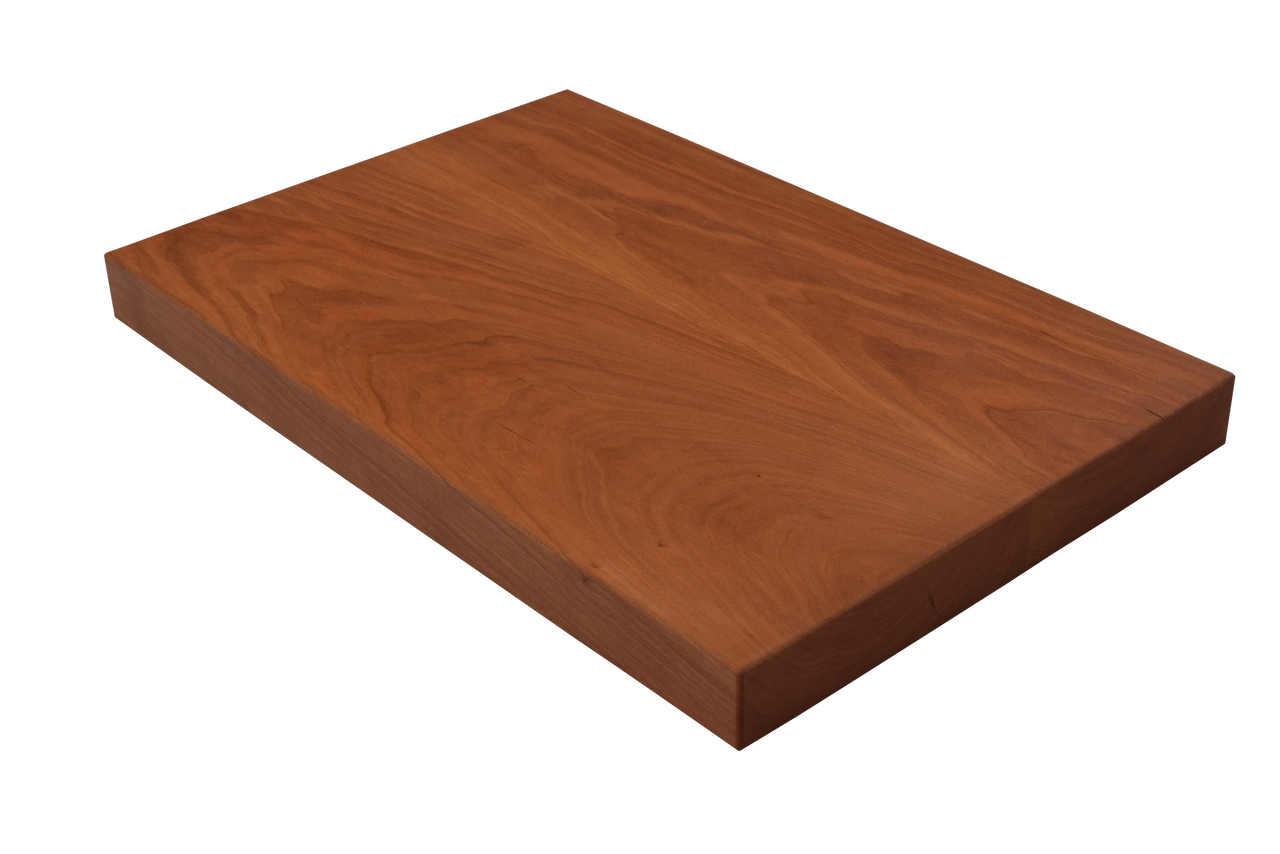When it comes to choosing the right wood for a cutting board, you might find yourself wondering, “Can cherry wood be used?” Well, my friend, I’m here to give you the scoop on this juicy topic.
Now, picture this: You’re in the kitchen, chopping up some fresh veggies for a delicious stir-fry. And what’s that you’re using? A stunning cherry wood cutting board! But hold on a sec, can cherry wood really handle all that slicing and dicing?
Let’s peel back the layers and discover the truth about whether cherry wood is up to the task. So grab a seat, and let’s dive into the world of cherry wood and cutting boards together!

Can Cherry Wood Be Used for a Cutting Board?
Cherry wood is a beautiful and popular choice for furniture and woodworking projects. Its rich, reddish-brown color and smooth grain make it highly desirable. But can cherry wood be used for a cutting board? In this article, we will explore the characteristics of cherry wood and its suitability for cutting board use. We’ll discuss the pros and cons, maintenance tips, and alternative wood options that you can consider. So, let’s dive in and find out if cherry wood is the right choice for your cutting board needs.
The Characteristics of Cherry Wood
Cherry wood is known for its unique physical properties, which make it suitable for various applications. In terms of hardness, cherry wood is classified as a hardwood, meaning it is durable and resistant to wear and tear. It has a density of approximately 590 kg/m³, making it moderately dense compared to other hardwoods.
Cherry wood also has a straight grain with occasional curly or wavy patterns, adding to its visual appeal. It has a fine to medium texture, making it smooth to the touch. The wood has a natural luster that enhances its color, and it ages gracefully, developing a rich patina over time.
In terms of stability, cherry wood has a moderate level of stability, which means it is less prone to warping or shrinking. However, like all wood, cherry can still be affected by changes in humidity and temperature, so proper care and maintenance are essential.
The Pros of Using Cherry Wood for a Cutting Board
1. Aesthetics: Cherry wood’s warm, reddish-brown color and attractive grain patterns can add a touch of elegance and sophistication to your kitchen. Using cherry wood for a cutting board can be a visually appealing choice.
2. Durability: Cherry wood is a hardwood, which means it is inherently strong and durable. It can withstand regular use and is less likely to get scratched or damaged compared to softer woods.
3. Natural Antimicrobial Properties: Some studies suggest that certain hardwoods, including cherry wood, have natural antimicrobial properties that can help inhibit the growth of bacteria on the surface of the cutting board.
The Cons of Using Cherry Wood for a Cutting Board
1. Porosity: Cherry wood is slightly porous, which means it can absorb moisture and odors. This can make it more susceptible to staining and can also provide a breeding ground for bacteria if not properly cleaned and maintained.
2. Knife Marks: Cherry wood is relatively soft compared to some other hardwoods, so it may show knife marks more easily. Over time, the cutting surface may develop grooves and scratches.
3. Regular Maintenance: To keep cherry wood cutting boards in optimal condition, regular maintenance is required. This includes proper cleaning, oiling, and periodically sanding the surface to remove any scratches.
Alternative Wood Options
If you have concerns about the suitability of cherry wood for a cutting board, there are several alternative wood options to consider:
1. Hard Maple: Hard maple is a popular choice for cutting boards due to its hardness, durability, and non-porous nature.
2. Walnut: Walnut is another excellent option known for its durability and dark, rich color. It is less porous than cherry wood and has natural antimicrobial properties.
3. Bamboo: Bamboo cutting boards are an eco-friendly alternative. Bamboo is a fast-growing grass that is harder than most hardwoods and has natural antimicrobial properties.
Tips for Maintaining a Cherry Wood Cutting Board
To keep your cherry wood cutting board in top shape, follow these maintenance tips:
- Hand wash the cutting board with warm, soapy water after each use.
- Dry the board thoroughly to prevent moisture absorption.
- Apply a food-safe mineral oil or board conditioner every few months to keep the wood moisturized and prevent it from drying out or cracking.
- Avoid exposing the cutting board to extreme heat or prolonged periods of moisture, as this can damage the wood.
- Periodically sand the surface to remove any deep scratches or knife marks.
In Summary
Cherry wood can be used for a cutting board, but it does come with its pros and cons. While it offers aesthetic appeal, durability, and natural antimicrobial properties, it also requires regular maintenance and may show knife marks more easily. If you prefer a harder and less porous option, you may want to consider alternatives like hard maple, walnut, or bamboo. Ultimately, the choice comes down to your personal preferences and priorities. With proper care, a cherry wood cutting board can be a functional and beautiful addition to your kitchen.
Key Takeaways: Can Cherry Wood Be Used for a Cutting Board?
- Yes, cherry wood can be used for a cutting board.
- Cherry wood is a hardwood that is durable and has natural antimicrobial properties.
- Cherry wood cutting boards require regular maintenance such as oiling to prevent drying and cracking.
- Cherry wood has a beautiful reddish hue that adds a touch of elegance to your kitchen.
- Using cherry wood cutting boards adds a distinct flavor to certain foods due to the wood’s natural oils.
Frequently Asked Questions
When it comes to making a cutting board, various types of wood can be used. One popular option is cherry wood. Is cherry wood suitable for cutting boards? Let’s find out!
1. What makes cherry wood a good choice for a cutting board?
Cherry wood possesses several qualities that make it suitable for crafting cutting boards. Firstly, cherry is a hardwood, known for its durability and strength. This means your cherry wood cutting board will be able to withstand the daily rigors of cutting, chopping, and slicing food.
Additionally, cherry wood has a tight grain structure, which helps prevent moisture from penetrating the board. This is essential for maintaining the longevity of the cutting board, as it reduces the chances of warping or splitting. The natural oils in cherry wood can also provide some resistance to bacteria growth, making it a hygienic option for your kitchen.
2. Does cherry wood require any special precautions for use in cutting boards?
While cherry wood is an excellent choice for cutting boards, there are a few precautions to keep in mind. Firstly, cherry wood is prone to staining. To prevent this, it’s important to clean and dry the cutting board thoroughly after each use. Additionally, using a food-grade mineral oil or beeswax finish on the cherry wood can help protect and enhance its natural beauty.
Another consideration is that cherry wood can darken over time when exposed to UV light. If you prefer the natural reddish-brown color of fresh cherry wood, it’s recommended to keep your cutting board out of direct sunlight or regularly apply a UV protectant finish. These simple precautions will help keep your cherry wood cutting board in great condition for years to come.
3. Is cherry wood resistant to knife marks?
Cherry wood has a moderate hardness rating, which means it strikes a good balance between being durable and gentle on knife blades. While knives will leave some marks on the cutting surface, cherry wood tends to show less noticeable knife marks compared to softer woods like pine or bamboo. However, regular maintenance such as sanding and re-oiling will help minimize and fade any marks that may appear over time.
4. Can cherry wood impart any flavor onto food?
Cherry wood, like other hardwoods, is generally considered safe to use for cutting boards and does not impart any strong flavors onto food. However, it’s important to note that food flavors can sometimes transfer to the cutting board. To prevent this, it’s recommended to clean the cutting board thoroughly after cutting pungent or strongly flavored foods. Regularly oiling the cherry wood can also help create a protective barrier and reduce the likelihood of flavor transfer.
5. Can cherry wood be used for both meat and vegetable cutting boards?
Yes, cherry wood is versatile and can be used for both meat and vegetable cutting boards. It is important, however, to designate separate cutting boards for raw meat and vegetables to prevent cross-contamination. By using cherry wood for both types of cutting boards, you can enjoy the beauty and durability of this wood for all your culinary needs.

How to Turn Rough Cherry into Cutting Board!
Summary
Cherry wood can be used for a cutting board, but it has a few drawbacks. It is not as hard or durable as other woods commonly used for cutting boards like maple or walnut. Cherry wood is also more likely to develop scratches and stains over time. However, if you take proper care of your cherry wood cutting board by regularly oiling and cleaning it, it can still be a functional and beautiful addition to your kitchen.
It’s important to consider your needs and preferences when choosing a cutting board material. While cherry wood may not be the most practical option, it can still be used with extra care. Ultimately, the choice is yours, and it’s worth thinking about what is most important to you in a cutting board, whether it’s durability, aesthetics, or something else.
